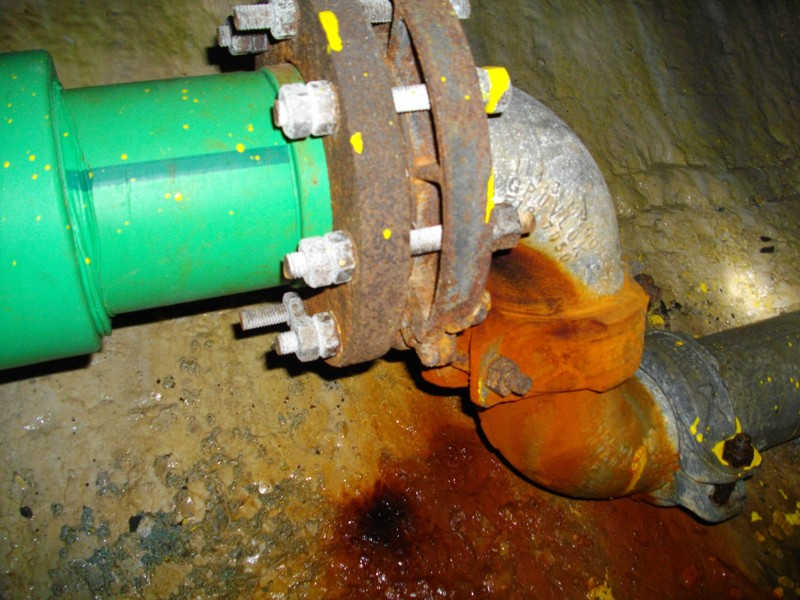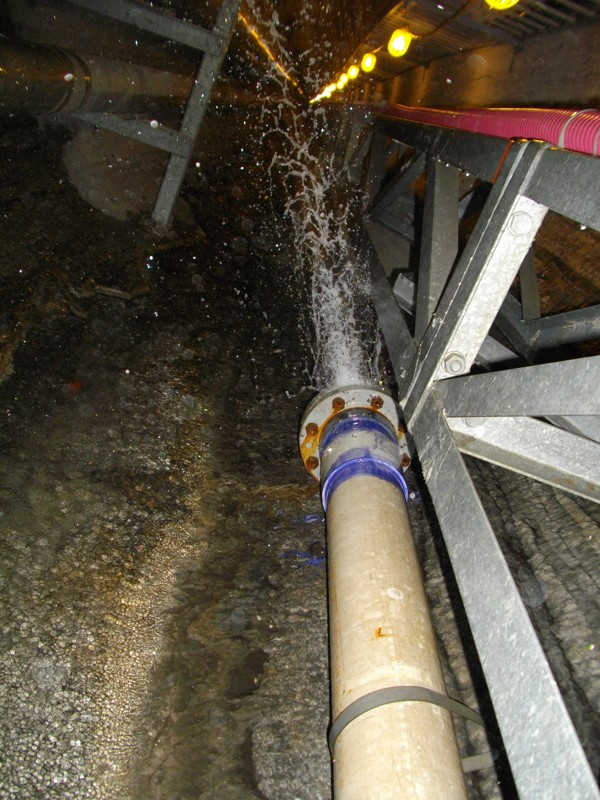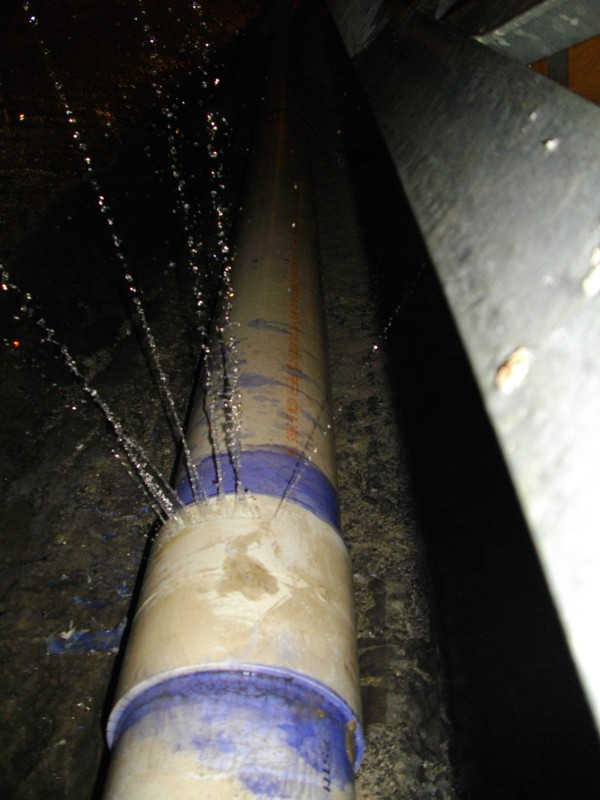PIPING SOLUTION WITHSTANDS HEAT IN FLOOD DISASTER
aquatherm not only held up to the normal wear and tear of the subterranean environment, but remained intact despite 380°F steam lines in the flooded tunnel.
The Challenge
In the damp environment of a utility tunnel, the V.U. staff had experienced problems with corrosion of metal pipes.
The Solution
aquatherm not only held up to the normal wear and tear of the subterranean environment, but remained intact despite 380°F steam lines in the flooded tunnel.
Installed in 2008 for its durability in a utility tunnel, aquatherm’s polypropylene-random piping didn’t melt or leak despite being submerged along with 380 °F steam during a huge flood in May 2010.
In early May, record-breaking flash floods in Tennessee, Mississippi, and Kentucky killed dozens of people and destroyed homes and businesses throughout the region. Nashville was hit particularly hard, and several businesses and institutions (such as the storied Grand Ole Opry, which was forced to reschedule events at various venues around Music City) were devastated.
While the Cumberland River, which reached a 70-year high — 12 feet above flood stage — slowly receded, facility managers struggled to repair damages and remove flood waters from their properties. Tim Cook, special equipment repair lead technician with Vanderbilt University in Nashville, and his staff were faced with the dilemma of trying to deal with a flooded 5,000-foot-long V-shaped utility tunnel.
THE UNDERGROUND BACKGROUND
 The tunnel was dug about a decade ago to depths ranging between 100-140 feet to transport electrical conduit, steam supply, steam condensate, 300 psi natural gas, chilled water and pneumatic control lines. Eight and a half feet in diameter, it runs between the university power plant and the Monroe Carell Jr. Children’s Hospital at Vanderbilt.
The tunnel was dug about a decade ago to depths ranging between 100-140 feet to transport electrical conduit, steam supply, steam condensate, 300 psi natural gas, chilled water and pneumatic control lines. Eight and a half feet in diameter, it runs between the university power plant and the Monroe Carell Jr. Children’s Hospital at Vanderbilt.
When the tunnel was originally dug, an aquifer or spring was hit, causing the tunnel to flood. So a sump pit was dug and the water was pumped out and used for irrigation. However, in September 2003 the university decided to try using the water for cooling tower make-up and to save money. The tunnel was penetrated at a point directly through the rock where it was determined the main source of water was flowing. It quickly became apparent that there was not constant water available from this point, as well as too much sediment in the water and undersized water softeners. Thus, this first effort failed.
But all of this was only part of Cook’s problem back in 2008. The combination of groundwater seeping in from natural springs, rainwater trickling in, and condensate building up in the space had taken their toll on the existing galvanized steel piping. Additionally, some joints were leaking.
So in spring 2008, with a failed attempt at using the unreliable water source and leaking steel pipe affecting the university’s bottom line, Cook was charged with solving these problems.
“The first issue was to have a reliable constant source of water, which was from a collection sump at the low point of the tunnel,” he said. “To do this we had to install two submersible pumps and add an additional 1,000 feet of pipe, as well as remove the old source connection.”
Cook consulted with other Vanderbilt facility staff and the local P/HVAC distributor, and they reviewed the options: PVC, HDPE, steel, and polypropylene.
While each option had its strengths, the joint integrity offered by aquatherm’s polypropylene piping, which uses a unique heat fusion process to create seamless joints, made it a better fit. The distributor provided the V.U. staff with an aquatherm demonstration, explaining how the pipes and fittings are correctly joined and installed.
“We decided to go with aquatherm because we don’t think we’ll have any problems with it and if we do they will be easy to fix,” Cook said in 2009. “It was a bit more expensive than some of the other options, but we decided that since it’s a wet, damp environment the product would be the way to go. We liked everything about it,” he added. Considerable installation time savings also resulted from the selection of the aquatherm piping, but the pipe’s durability would be truly tested and proven during the 2010 flood.
‘AMAZING’
 In the deepest part, where the tunnels meet at the “V,” two Gorman-Rupp submersible pumps are tied into aquatherm blue polypropylene-random pipe in order to remove the ground water and bring it to the plant where it is softened and used in the plant’s cooling towers. The system also features a three-inch blue line to the main plant for flushing the lines to a sewer.
In the deepest part, where the tunnels meet at the “V,” two Gorman-Rupp submersible pumps are tied into aquatherm blue polypropylene-random pipe in order to remove the ground water and bring it to the plant where it is softened and used in the plant’s cooling towers. The system also features a three-inch blue line to the main plant for flushing the lines to a sewer.
The entire tunnel flooded on May 2, and water rose above the tunnel’s debris barrier, allowing insulation and other materials to wreck the sump pumps. Thus, water filled the entire space, reaching 40 feet up the tunnel’s 110-foot vertical section.
“All the steam and electrical lines were submerged and we couldn’t pump anything out. The steam lines were still live and at around 380 degrees(F). Over the course of a couple of days we brought in rental pumps, but the water kept coming,”Cook said.
“The steam lines heated the tunnel and its contents to the point where the plastic light fixtures melted, but the aquatherm stayed completely intact. We were amazed that it held up and it was a saving grace,” he added. Using a supplemental sump pump and the aquatherm piping, the V.U. staff was able to get the old pumps out and install new ones and remove all of the water in about three days.
“The tunnel water pumps did their job and the pipe held up — not a leak. That the fused piping, which is welded via a heat fusion process, held up when the lighting fixtures could not was pretty amazing,” said Cook, who added that aquatherm will certainly be “in the thought process for any future piping.”
